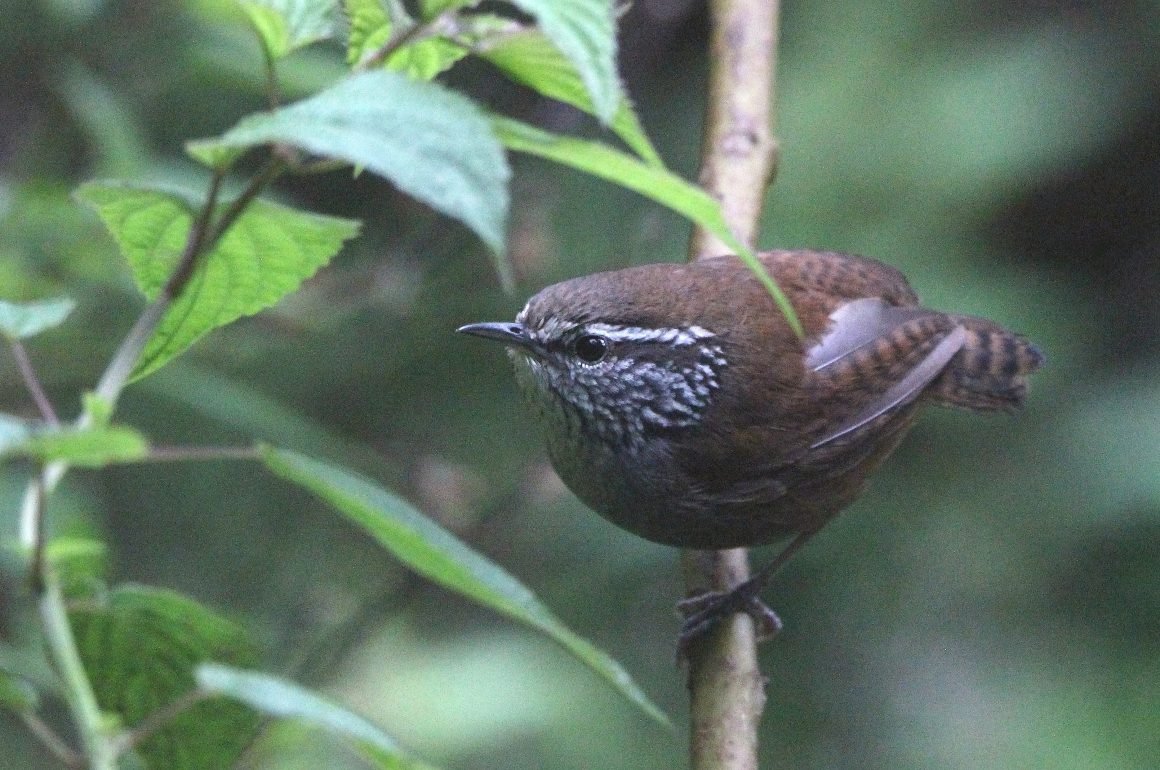
When it comes to wrens, central Mexico has it pretty good. We share seven resident species with different parts of the United States: the Rock, Canyon, Cactus, (Brown-throated) House, Marsh, Sedge, and Bewick’s Wren can all be seen within a half hour of Morelia. (I confess, I have yet to see Rock or Sedge Wrens here — but I know they are there.) We also receive migratory (Northern) House Wrens in the winter.
But then there are the local specialties, most of which are endemics. The raucous Spotted and Gray-barred Wrens are in the Cactus Wren family. The Happy Wren was once considered to share a genus with the Carolina Wren. The Hot Country’s Banded Wrens are related to the Sinaloa Wrens that I can see on the coast of Michoacán. Each finds its own special habitat in this highly-varied part of the world. But one endemic holds a special place in my heart: this is the tiny, melodious Gray-breasted Wood-Wren.
It’s unusual to find a bird that is mostly seen, not heard, and yet has so much attitude when you do see it. The Gray-breasted Wood-Wren lives its entire life in thick, short underbrush under dense forest. In other words, it is a bird photographer’s nightmare. But there is no missing its beautiful song wringing through a canyon. And when you do get it to come within sight (alas, with playback, always), it can be as bold as any other member of this cocky family.
A week ago Monday, I drove one hour up to the Cerro de Garnica National Park, at an altitude of 3,000 m (10,000 feet). I went to collect cuttings of local red sages that bloom beautifully in my garden, but need renewing every couple of years. But, since I know this is my one place to find this Wood-Wren, I of course went looking for it. Maybe this time I would finally manage some decent photos of this adorable bird?
Sure enough, at the first possible site for the species, only two reps of its song, played on my cell phone, were enough to bring not one, but two Wood-Wrens into my sight. First, they answered “my” song. Then the started to work their way to my general area. One gave me some clear views, and, oh joy!, I had already adjusted my camera to the inevitably low light levels. Or, at least I was close enough to make the last adjustments in time for a good photo session.
And then, to my astonishment, Wren #1 decided no intrusive wren was present… But, gee, there are some tasty bugs around here! He (or perhaps, she) proceeded to have a casual feeding session, only a few feet from me and my camera! I, of course, kept my body still, but clicked away to my heart’s content, causing no concern at all to my unaware subject.
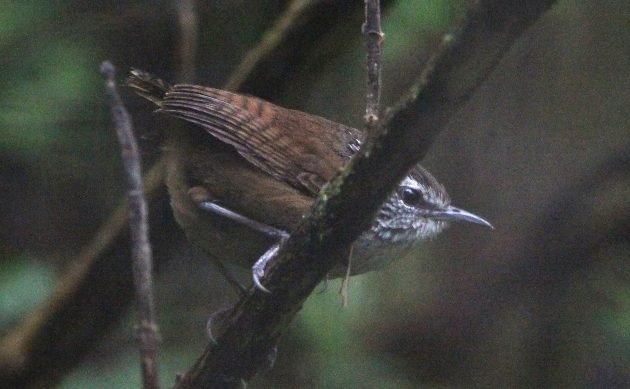
As you can see, Gray-breasted Wood-Wrens are among those wrens with a ridiculously (and adorably) short tail. They are mostly clothed in rich shades of brown, but have an intricate black-and-white face pattern, a detail shared with many Mexican species. And they, like most of their wren relatives, are given to posing in all sorts of unlikely, and highly photogenic, ways.
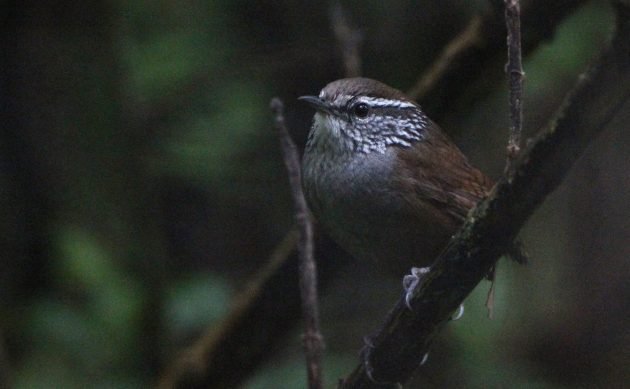
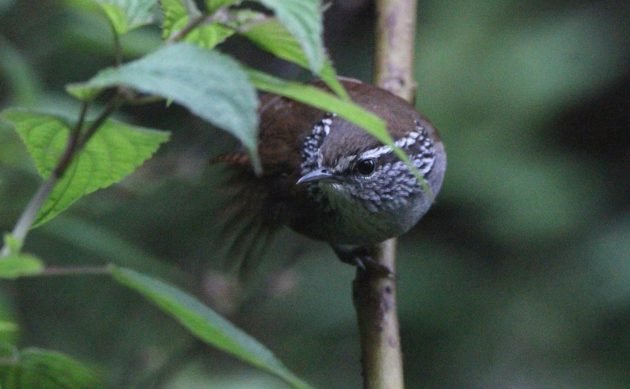
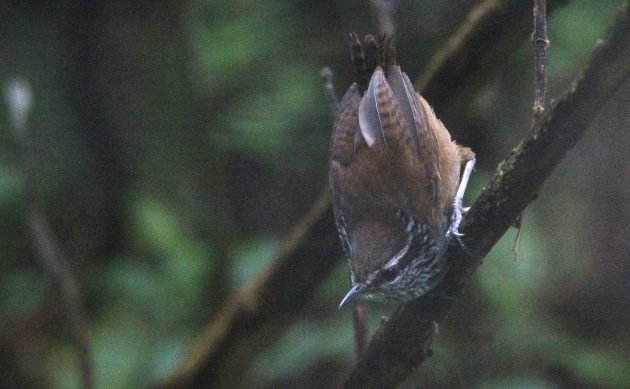
They also live among a nice group of beautiful neighbors. No sooner had the Wood-Wrens departed, than a Green-striped Brushfinch moved in for his own portrait session. The buzzy calls of Red and Golden-browed Warblers, as well as the rattle of Gray-barred Wrens and the songs of Russet and Ruddy-capped Nightingale-Thrushes and Spotted Towhees (Olive-backed), could be heard everywhere. But only the Wood-Wren, Brushfinch, and a Gray-barred Wren gave me much in the way of photos.
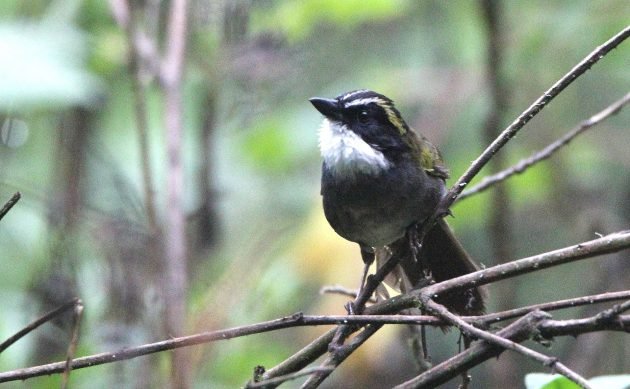
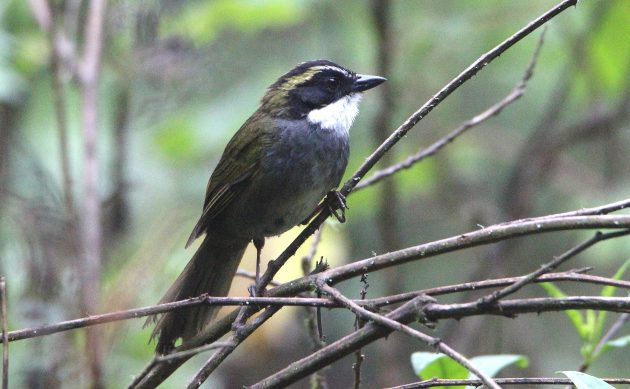
Not that I’m complaining.
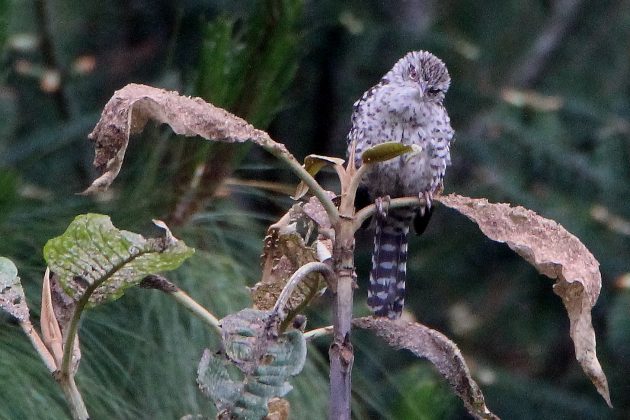













Leave a Comment